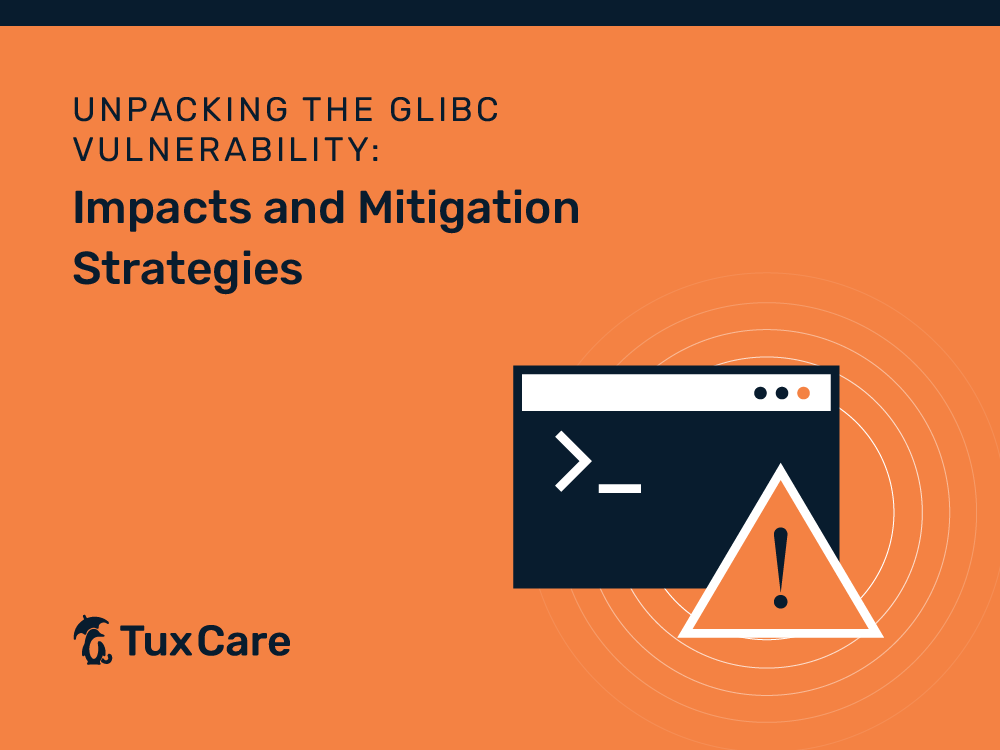Facing a glibc Vulnerability: Impacts and Mitigation Strategies
Linux vulnerabilities appear frequently and often with severe repercussions. One such concerning issue is a glibc vulnerability. GNU C Library (glibc) is a shared library that serves as the backbone for many Linux systems, making any vulnerabilities within it particularly alarming for enterprises and developers alike.
A glibc Vulnerability: The Basics
The GNU C Library (often shortened to glibc) is the C standard library for most, if not all, Linux distributions. When a vulnerability is found in glibc, it puts the foundational layers of these systems at risk. Exploits may include arbitrary code execution, denial of service, or unauthorized data access. What’s more worrying is that this library interacts closely with many other system components and applications, which exacerbates the potential impact.
Impact on Systems
Security Risks
- Data Breach: A glibc vulnerability can potentially expose sensitive data, creating a route for unauthorized access.
- Service Disruption: If an attacker successfully exploits this type of vulnerability, it could disrupt operations, leading to business continuity risks.
- Compliance Penalties: Organizations failing to patch a vulnerability in this shared library could face hefty fines for non-compliance with regulations like GDPR or HIPAA.
Performance Degradation
Patching usually involves downtime, affecting the Quality of Service (QoS) your system can provide. Traditional patching methods require administrators to schedule maintenance windows, which isn’t always ideal. When faced with a vulnerability in a shared library, like glibc, organizations can minimize performance degradation by adopting a non-disruptive patching approach, like live patching with TuxCare’s LibCare.
Strategies for Mitigation
When dealing with a glibc vulnerability, the first step is always to evaluate the risk it poses to your unique system architecture. Once that is done, here are some strategies for mitigation:
Traditional Patching
The most straightforward way to deal with a glibc vulnerability is by applying patches as they become available. Tools like apt for Debian-based systems and yum for RedHat-based systems allow you to update glibc. The downside is the inevitable downtime incurred during this process, as patch deployments with a traditional approach like this necessitate a reboot – and the downtime involved with a reboot.
Live Patching for OpenSSL and glibc
Live patching technology like LibCare from TuxCare provides a cutting-edge alternative. If you’re already a KernelCare Enterprise (KCE) user, adding LibCare to your portfolio makes perfect sense. This add-on enables automated patching for OpenSSL and glibc vulnerabilities, enabling organizations to stay fully patched without needing to reboot systems or schedule inconvenient maintenance windows.
Security Layers
Adding extra security layers such as firewalls or intrusion detection/prevention systems can also mitigate the impact of a vulnerability in a shared library like glibc. Tools like pfSense for firewall implementation or Snort for intrusion detection can supplement your security infrastructure.
Interactions with Existing Infrastructure
When opting for a mitigation strategy, it’s essential to understand how these tools will interact with your current setup.
- Traditional Patching: Tools like apt and yum are native to their respective distributions. They often work seamlessly but might require manual configurations.
- Live Patching for OpenSSL: If you opt for LibCare, it integrates with KernelCare Enterprise, providing a unified, automated security solution. This leads to less manual intervention and a more streamlined operational flow.
- Security Layers: Firewalls and IDS/IPS systems usually require specific hardware or can run as software on your existing infrastructure. They may require specialized configuration and maintenance, which could be time consuming.
Embracing Automated Patching for Shared Libraries
When it comes to mitigating risks associated with a glibc vulnerability, there multiple options. Traditional patching methods, although reliable, often come with their set of challenges, including downtime and manual intervention. Live patching technologies like LibCare offer a compelling, time-saving alternative, especially if you’re already using KernelCare Enterprise for non-disruptive patching of your Linux servers. LibCare not only secures your system but also provides the flexibility businesses need to operate continuously and efficiently.
If you’re interested in exploring more about how live patching can play a crucial role in your cybersecurity strategy, you might want to read our post on Infrastructure as Code: A Double-Edged Sword to Azure.
For organizations dealing with critical systems where downtime is not an option, choosing a solution like LibCare for automated patching of shared libraries can significantly decrease risks while enhancing operational efficiency.
In the end, understanding your specific needs, resources, and system architecture will dictate the best approach to mitigating a glibc vulnerability. Choose wisely, for your choice could very well determine your organization’s future security posture.



 Documentation
Documentation Login
Login




